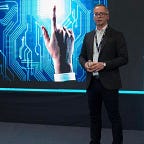Building the Artificial Ant.
In nature, everything is based on fractals, rich in details although with some repetitive patterns within the design.
Every living organism is based on some type of pattern which is far more subtle than it seems at a first glance. These patterns evolve into a self-guided shape where randomness is tamed a bit, but not ignored.
Today’s technologies tend to be fragile because they are repeating some unnatural patterns, are extremely visible, and are prone to fragility.
Transistors are analog but we are using them more simply, severely limiting their potential and making any kind of digital technology prone to inherit their fragile flaws. We cannot put an infinite number of transistors on a chip, and we are using billions of power-hungry of them to try to recreate differently what nature does in a very simple and efficient way.
Yes, Nature is the result of billions of years of evolution on this planet but even the fact it evolved in this way underlines the fundamental principles of energy and computational efficiency. As Nassim Taleb is writing, these are antifragile systems that can handle extinction-level planetary disasters and still make sure the life itself survives.
On Earth, randomness is considered when Nature is “designing” its systems. It doesn’t know when an Asteroid will impact the planet or if the oxygen levels are going to increase or decrease over time, but life is somehow prepared for it. And this is what makes life resilient and even capable of jumping to other planets through evolutionary methods.
By contrast, current technology, most of it anyway, is based on simple premises. It can transmit information over vast distances, it can be used for complex calculus but to do that it needs a lot of energy.
Also, for more complex tasks, you need more and more transistors crammed into silicon. Moore’s Law, the law predicting that the number of transistors on a silicon chip will double every couple of years is near its end. Our viable alternatives are narrowing down as we speak. Quantum computing is still years, if not decades, in the future.
These digital systems are ignoring randomness and they cannot be used for evolutionary purposes. New software needs usually newer chips and electronics to work better and thus more energy. And the cycle just repeats itself into an informational bottleneck.
Digital technology cannot enable anything which remotely resembles True A.I. because it ignores the required random effects necessary for evolution. Being energy-hungry also equals fragility.
Current chips are just means of transporting energy (thus information) around and because we tend to transport more and more information their power consumption tends to increase over time. Based on these chips, our systems will see their power requirements increasing over time, making them fragile to global energy issues.
A higher energy requirement makes a system vulnerable while energy efficiency makes something resilient. Energy efficiency makes decentralization possible thus enabling robustness over long periods.
Ants appeared 150 million years ago on a planet where the dinosaurs reigned supreme, they are small, highly versatile, and perfectly adapted to their environment by having specialized roles within their swarm. They can be easily ignored, but they were here well before mankind and probably will remain long after mankind ceases to exist.
A single ant is quite an energy-efficient organism and has the right number of neurons capable of making simple decisions by itself while being able to integrate into larger swarms for more complex tasks.
A single ant can do simple tasks, such as moving around, in a very efficient way. Mankind needs complex systems to partially achieve the same results and these man-made complex systems are prone to error and fragile by design by being at least an order of magnitude more power-hungry. Inadaptability is an issue as well.
A single ant is quite simple from a design point of view, but its swarms are capable of far more complex tasks. An ant swarm is “made” of simple components capable of various levels of autonomy.
There are fundamental reasons why ants are still here after 150 million years; they survived extinction-level events and are still thriving.
Energy efficiency, computational efficiency, and resilience towards randomness.
Just like these small electronic components called memristors.
Memristors are a viable alternative because they benefit from tamed randomness, and they are not power-hungry. Newer types of electronics based on these components will inherit their characteristics paving the way toward more interesting technology developments.
These fundamental principles represent the pre-requisites on which new technologies should be built and the new types of computing based on memristors and the various mixes between memristors and transistors will enable the full potential of fuzzy logic, blockchain, quantum, and A.I.
No one knows for sure if True A.I. is possible but if it is, it won’t be based on digital architectures so it is quite clear that it will use a different set of basic electronic components.
Technology’s weak points are represented by the weakest links in the chain. Energy is an issue; Moore’s Law is ending, and it is absurd to build foundries in Space.
If we will go to Mars and other planets, we need something different for our computational needs and maybe, just maybe, ants provide the right clues.
Ants and memristors (and transistors to some extent) also have the same challenges. They are extremely important and yet, are easily looked over.
So, instead of building statistical models and calling them AI, we are building an ant brain first.
